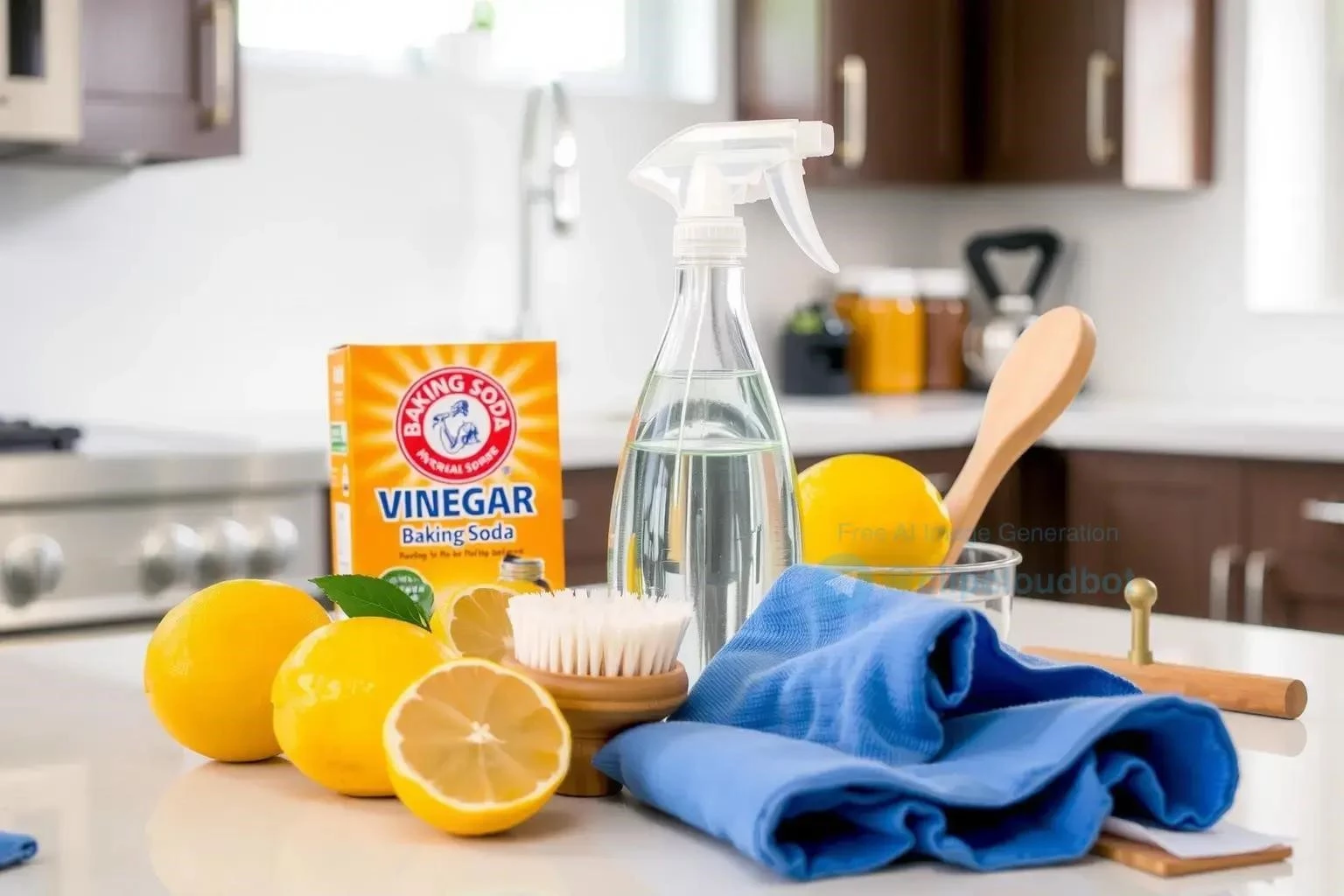Creating a Non-Toxic Haven: Simple Swaps for a Healthier Home
Transform your home into a sanctuary of wellness by making conscious choices about the products you bring in. Switching to non-toxic alternatives creates a healthier environment for you and your loved ones. From cleaning supplies to personal care items, small changes can make a big difference in reducing your exposure to harmful chemicals and creating a truly healthy home.
Identifying Common Household Toxins
Creating a truly healthy home environment begins with understanding the potential dangers lurking in everyday products. Many common household items contain harmful chemicals that can negatively impact our health and well-being. By learning to identify these toxins, we can make informed decisions about the products we use and take steps to minimize our exposure.
Fragrances: Often listed simply as “fragrance” on labels, these can be a cocktail of undisclosed chemicals, some linked to hormone disruption and respiratory issues. Opt for fragrance-free products or those scented with natural essential oils.
Phthalates: Found in plastics, air fresheners, and personal care products, phthalates are endocrine disruptors that can interfere with hormone function. Look for phthalate-free labels and avoid products with “fragrance.”
Volatile Organic Compounds (VOCs): Present in paints, cleaning supplies, and furniture, VOCs can contribute to indoor air pollution and cause headaches, dizziness, and respiratory problems. Choose low-VOC or VOC-free options.
Triclosan: An antibacterial agent found in some soaps and hand sanitizers, triclosan has been linked to antibiotic resistance and hormone disruption. Regular soap and water are highly effective alternatives.
Perfluorinated Chemicals (PFCs): Used in non-stick cookware and stain-resistant fabrics, PFCs are persistent in the environment and can accumulate in our bodies. Opt for cast iron, stainless steel, or ceramic cookware.
Formaldehyde: Found in pressed wood products, some textiles, and insulation, formaldehyde is a known carcinogen and can irritate the eyes, nose, and throat. Choose solid wood furniture and look for low-formaldehyde certifications.
Ammonia: A common ingredient in cleaning products, ammonia can irritate the respiratory system and skin. Baking soda and vinegar offer effective and natural cleaning power.
By becoming aware of these common household toxins and their potential health impacts, you can start making informed choices about the products you bring into your home and create a safer and healthier living environment for yourself and your family. Researching product labels and choosing safer alternatives is a crucial step in your journey towards low-tox living.
Easy and Effective Clean Living Swaps
Transitioning to a non-toxic home doesn’t have to be overwhelming. Start with simple swaps that make a big impact. By replacing conventional products with healthier alternatives, you can significantly reduce your exposure to harmful chemicals and create a cleaner, healthier living space. Here are some easy and effective swaps to get you started:
Swap plastic food containers for glass or stainless steel. These alternatives are durable, reusable, and don’t leach harmful chemicals into your food.
Swap conventional cleaning products for DIY solutions. Baking soda, vinegar, and essential oils can handle most cleaning tasks effectively and safely.
Swap air fresheners for essential oil diffusers or houseplants. These natural options freshen the air without synthetic fragrances and chemicals.
Swap plastic wrap for beeswax wraps or reusable silicone covers. These eco-friendly options reduce plastic waste and keep your food fresh.
Swap conventional candles for beeswax or soy candles. These natural waxes burn cleaner and don’t release harmful toxins into the air.
Swap non-stick cookware for cast iron, stainless steel, or ceramic. These alternatives are free of harmful PFCs and offer excellent cooking performance.
Swap plastic water bottles for stainless steel or glass bottles. Stay hydrated sustainably while avoiding plastic chemicals.
Swap conventional personal care products for natural and organic alternatives. Look for products free of parabens, phthalates, and synthetic fragrances.
Swap synthetic dryer sheets for wool dryer balls. These reusable balls soften clothes naturally and reduce static cling without chemicals.
Swap plastic shower curtains for fabric or hemp alternatives. These options avoid the off-gassing of chemicals common with vinyl shower curtains.
By incorporating these simple swaps into your daily routine, you can gradually create a healthier and more sustainable home environment. These small changes can make a significant difference in reducing your exposure to toxins and promoting overall well-being.
Building a Chemical-Free Cleaning Routine
Maintaining a clean home doesn’t require harsh chemicals. Embrace a chemical-free cleaning routine using simple, natural ingredients that are safe for your family and the environment. These effective alternatives offer powerful cleaning power without the toxic fumes and residues.
All-Purpose Cleaner: Mix equal parts white vinegar and water in a spray bottle. Add a few drops of your favorite essential oil for a fresh scent. This versatile cleaner works wonders on countertops, floors, and windows.
Bathroom Scrub: Combine baking soda and a small amount of water to form a paste. Use this gentle scrub to clean sinks, tubs, and toilets. For extra cleaning power, add a splash of vinegar.
Glass and Mirror Cleaner: Mix equal parts white vinegar and water in a spray bottle. Spray onto surfaces and wipe clean with a microfiber cloth for streak-free shine.
Floor Cleaner: Add a cup of white vinegar to a bucket of warm water. Mop floors as usual, enjoying the naturally clean and fresh scent.
Wood Polish: Mix equal parts olive oil and lemon juice. Apply a small amount to a soft cloth and buff wood furniture to a beautiful shine.
Dish Soap: Look for natural dish soaps made with plant-based ingredients and free of synthetic fragrances and dyes. Castile soap is a great option.
Laundry Detergent: Choose a natural laundry detergent free of harsh chemicals and fragrances. Baking soda can be added to boost cleaning power and soften clothes.
Disinfectant: Hydrogen peroxide is a natural disinfectant that can be used to sanitize surfaces. Spray onto surfaces and let sit for a few minutes before wiping clean.
By adopting these simple recipes and choosing natural cleaning products, you can create a chemical-free cleaning routine that promotes a healthy home environment for you and your loved ones. Embrace the power of natural cleaning and enjoy a sparkling clean home without the worry of harmful toxins.
Embracing Low-Tox Living Beyond Cleaning Products
Creating a truly low-tox home extends beyond just cleaning supplies. It involves a holistic approach that considers all aspects of your living environment, from the furniture you choose to the air you breathe. By making conscious choices in various areas, you can minimize your exposure to harmful chemicals and create a healthier and more sustainable lifestyle.
Choose natural bedding and mattresses: Opt for organic cotton, wool, or natural latex to avoid exposure to synthetic materials and flame retardants.
Purify your indoor air: Invest in an air purifier with a HEPA filter to remove dust, pollen, and other airborne pollutants. Houseplants can also naturally filter the air.
Filter your water: Install a water filter to remove chlorine, heavy metals, and other contaminants from your drinking water. Consider a whole-house filter for comprehensive purification.
Minimize plastic use: Reduce your reliance on plastic by using reusable bags, water bottles, and food containers. Choose glass or stainless steel alternatives whenever possible.
Decorate with natural materials: Opt for furniture made from solid wood, bamboo, or other sustainable materials. Avoid particleboard and other materials that may contain formaldehyde.
Choose natural textiles: Select clothing, bedding, and upholstery made from organic cotton, linen, or hemp. Avoid synthetic fabrics that may contain harmful chemicals.
Be mindful of personal care products: Choose natural and organic personal care products free of parabens, phthalates, and synthetic fragrances. Read labels carefully.
Reduce electromagnetic field (EMF) exposure: Minimize your exposure to EMFs by limiting screen time and keeping electronic devices away from your bed at night.
Create a calming environment: Incorporate elements of nature into your home, such as plants and natural light. Create a relaxing atmosphere that promotes well-being.
By embracing these practices, you can create a truly low-tox haven that supports your health and well-being; Remember that every small step you take towards reducing your exposure to toxins contributes to a healthier and more sustainable lifestyle.






